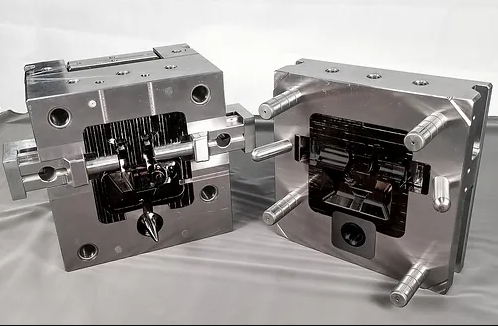Introduction:
Precision manufacturing plays a crucial role in various industries, such as aerospace, automotive, and electronics. Achieving high-quality and intricate components is essential for the success of these industries. Squeeze casting, also known as liquid metal forging, is a cutting-edge manufacturing process that offers a high-pressure solution for producing precisely engineered components. This article will delve into the details of squeeze casting, its advantages, and applications in precision manufacturing.
What is Squeeze Casting?
Squeeze casting is a unique manufacturing process that combines the benefits of casting and forging. It involves injecting molten metal into a preheated die cavity and applying a controlled amount of pressure during solidification. The pressure eliminates the presence of porosity, enhances the mechanical properties of the cast part, and allows for the production of intricate and thin-walled components.
The Squeeze Casting Process:
The squeeze casting process consists of several stages. First, a die is preheated to a specific temperature, ensuring proper fluidity of the molten metal. Then, the die is closed, and the molten metal is injected into the cavity at a controlled speed and pressure. The pressure is maintained until solidification is complete, ensuring the complete filling of the die and minimizing defects. Finally, the part is cooled, and the die is opened to remove the solidified component.
Advantages of Squeeze Casting:
1. Improved Mechanical Properties: The application of pressure during solidification leads to a refined microstructure with reduced porosity, resulting in superior mechanical properties such as increased strength and ductility.
2. Complex Geometry: Squeeze casting allows for the production of intricate and near-net-shape components that cannot be achieved through traditional casting techniques. This enables the manufacturing of complex parts with minimal machining requirements, reducing overall costs and lead times.
3. Enhanced Surface Finish: The high pressure applied during the squeeze casting process helps eliminate surface defects and ensures a smooth and precise surface finish, reducing the need for additional surface treatments.
4. Material Versatility: Squeeze casting can be performed with a wide range of materials, including non-ferrous alloys, aluminum, magnesium, and copper. This versatility allows for the production of components with tailored material properties to meet specific application requirements.

Applications of Squeeze Casting:
1. Aerospace Industry: Squeeze casting is extensively used in the aerospace industry for manufacturing critical components such as turbine blades, engine parts, and structural components. The process ensures the production of high-strength and lightweight parts, contributing to the overall performance and fuel efficiency of aircraft.
2. Automotive Industry: In the automotive industry, squeeze casting finds applications in producing engine blocks, pistons, transmission components, and suspension parts. The improved mechanical properties and reduced weight of the components contribute to enhanced vehicle performance and fuel economy.
3. Electronics Industry: The electronics industry benefits from squeeze casting for manufacturing heat sinks, housing components, and other high-precision parts. The process enables the production of complex shapes with excellent thermal conductivity, ensuring efficient heat dissipation in electronic devices.
4. Medical Industry: Squeeze casting is increasingly utilized in the medical industry for producing orthopedic implants, prosthetics, and surgical instruments. The process allows for the production of customized components with precise dimensions and enhanced biocompatibility.
Conclusion:
Squeeze casting has revolutionized precision manufacturing by offering a high-pressure solution for producing intricate and high-quality components. The process combines the advantages of casting and forging, resulting in improved mechanical properties, complex geometries, enhanced surface finish, and material versatility. With applications in aerospace, automotive, electronics, and medical industries, squeeze casting continues to drive innovation, enabling the production of components that meet the evolving demands of modern manufacturing.
-

- OEM Die casting manufacturer produce magnesium alloy wheel for kids push bike
-

- CNC machining auto dashboard bracket
-

- Poklopac kućišta prijenosnog računala A
-

- Visoko precizni dijelovi za livenje pod pritiskom od legure magnezija za automobilsku bravu za paljenje
-

- Kućište kontrolera auto dijelova od legure magnezija
-

- Bicikl Freehub 12/14/16 inča Dječji bicikl Low Rider Bicikli Magnezij aluminijske legure Dječji bicikl 3-8 godina na zalihama

 0086-750-5616188
0086-750-5616188 +86 13392089688
+86 13392089688 sales@zhongmei-tech.com
sales@zhongmei-tech.com







